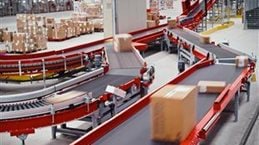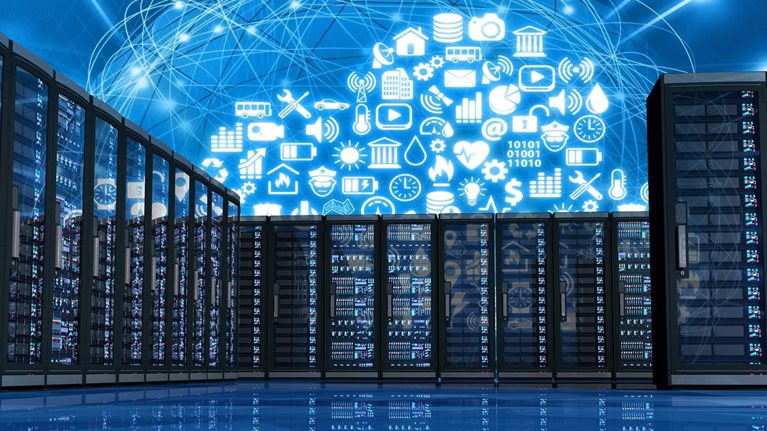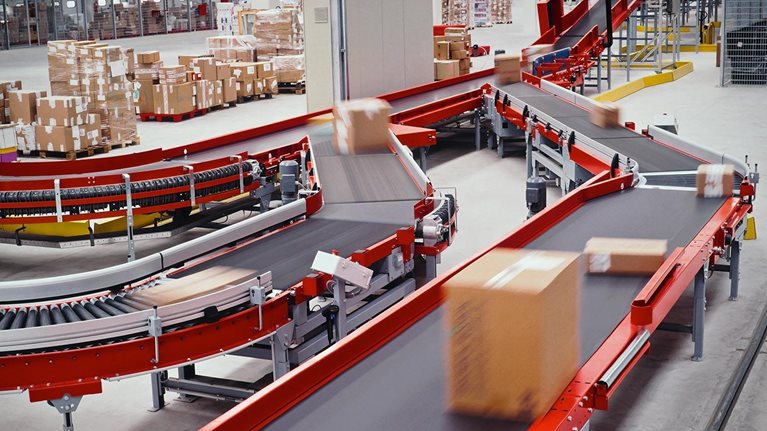Niccolò Machiavelli, one of history’s great futurists, might have predicted the Internet of Things (IoT) when he wrote, “There is nothing more difficult to take in hand, more perilous to conduct, or more uncertain in its success, than to take the lead in the introduction of a new order of things.” The IoT’s early innovators, who have grappled with mixed overall demand, a lack of consistent standards, and other challenges, would agree that their road has been difficult. But, like other visionaries before them, they have persisted in establishing a new order because they see the promise ahead.
Stay current on your favorite topics
Both consumers and the media are fascinated by IoT innovations that have already hit the market. These “smart” devices have sensors that communicate seamlessly over the Internet with other devices or the cloud, generating data that make the world safer, more productive, and healthier. In just a few years, some IoT devices have become standard, including thermostats that automatically adjust the temperature and production-line sensors that inform workshop supervisors of machine condition. Now innovators want to enable more sophisticated IoT technologies for self-driving cars, drone-delivery services, and other advanced applications.
Although some analysts are excited about the IoT’s potential, others have argued that it is overhyped. We take a more balanced view, based on our extensive research as well as our direct work with IoT application developers and their customers. Like the optimists, we believe that the IoT could have a significant, and possibly revolutionary, impact across society. But we also think that the lead time to achieve these benefits, as well as the widespread adoption of IoT applications, may take longer than anticipated. The uptake of IoT applications could be particularly slow in the industrial sector, since companies are often constrained by long capital cycles, organizational inertia, and a shortage of talented staff that can develop and deploy IoT solutions.
Would you like to learn more about how we help clients understand the Internet of Things?
For semiconductor companies, which are looking for new sources of revenue, the rate of IoT adoption is an important concern. In this article, we will look at the case for optimism, as well as the reasons for more modest expectations. We will also examine new technologies that could accelerate the IoT’s growth and product-development strategies that semiconductor companies could implement to increase the appeal of IoT offerings.
Reasons for optimism: Increased connectivity helps the IoT
If we look at the IoT’s recent growth, the optimists have reason to be encouraged. Consumers are more connected than ever, owning an average of four IoT devices that communicate with the cloud. Globally, an estimated 127 new devices connect to the Internet every second. A report from the McKinsey Global Institute estimates that the IoT could have an annual economic impact of $3.9 trillion to $11.1 trillion by 2025 across many different settings, including factories, cities, retail environments, and the human body (Exhibit 1).1

The IoT is also benefiting from infrastructure improvements that have enhanced connectivity. For example, only 20 percent of the global population is now covered by low-power, wide-area networks (LPWANs) that allow long-range communications among connected devices while optimizing both costs and power-consumption requirements. By 2022, however, we expect that 100 percent of the population will have LPWAN coverage. Similarly, technological advances are reducing power requirements, decreasing costs, and promoting the development of more integrated IoT solutions. Consider lidar sensors, the laser-based sensor packages that scan and detect surroundings, which are essential for autonomous driving. Their price has declined more than 10-fold over the past eight years and is expected to drop more than 65-fold over the next two. This decrease, combined with the increased technological sophistication of lidar, is contributing to the development of fully autonomous cars, which could constitute 25 percent of all vehicle purchases by 2035.
Reality check: Industrial IoT adoption has been slower than expected
Many experts view the IoT’s slower-than-expected growth within the industrial sector with particular concern. To gain more perspective, we investigated how industrial companies are using IoT applications and tried to estimate whether business-to-business (B2B) growth might accelerate. In addition to basic research, we interviewed and surveyed over 100 leaders from various industries, including public sector and utilities, discrete manufacturing, oil and gas, mining, telecommunications, technology, media, healthcare, and pharmaceuticals.
Few large-scale IoT projects
Our interviews revealed that most businesses are adopting the IoT only to a limited extent. With the exception of oil and gas and mining, leaders from all industries reported that their companies often received real-time data from IoT sensors. However, most leaders reported that their enterprise deployments were still at proof-of-concept stage, and none have yet embarked on large-scale programs (Exhibit 2).

Limited use of IoT data
Although IoT sensors collect vast stores of data, a recent report from MGI showed that companies do not analyze most of them.2 For example, on an oil rig that had 30,000 sensors, managers examined only 1 percent of data. What’s more, business leaders seldom consider information from IoT sensors when making important decisions, including those related to maintenance planning or automation procedures. Their reluctance to examine IoT data stems from several factors, including a lack of data-analytics staff, but the most important reason is simple: as humans, we prefer to consult other people for advice or to look back on our own experience, when making decisions. Although hard data from IoT devices are more complete and objective, we tend to assign them less value. Before IoT data gain a more prominent role in corporate decision making, business leaders and other important managers—maintenance supervisors, field service technicians, and retail merchandisers, to name just a few—will have to appreciate their value.
A focus on simple IoT applications
In our survey, respondents favored simple use cases that enable tracking data and sending status alerts related to changes in the physical world (Exhibit 3). Some companies, for instance, have placed sensors in food packaging that track a product’s location throughout the distribution supply chain. Simple tracking and alert functions are relatively easy to deploy because they do not require advanced analytics, complex algorithms, or data-science capabilities, allowing them to generate value quickly. Although some innovators are enthusiastic about IoT applications for optimization and prediction, we expect that most customers will remain focused on simple use cases, at least for the immediate future. And that means they will not obtain full value from the IoT.

IoT security concerns
IoT devices, connected cars, and edge gateways are all potential entry points for a cyberattack—and we recently saw the full extent of this vulnerability. In the 2016 Mirai botnet attack, hackers specifically targeted IoT devices, including appliances and routers, and disrupted many major Internet service providers. The attack, the most significant of its kind, was possible only because of human weakness—a failure to reset generic or default password and username combinations. This attack, and others like it, demonstrate that IoT vulnerabilities often result from a lack of basic care in managing and maintaining devices. Such weaknesses cannot be eliminated through encryption, attack-detection programs, biometric-access control, or other sophisticated technologies. That means companies that want to expand their IoT efforts will need to launch comprehensive security initiatives that address weaknesses resulting from both technological vulnerabilities and a lack of caution among those who use IoT devices.
Technology developments: IoT growth could accelerate
A few important, and potentially disruptive, developments could accelerate IoT uptake and create opportunities for semiconductor players.
Microphones and video: The ultimate IoT sensors
Video analytics—the application of sophisticated algorithms to video feeds—is spurring the creation of new IoT applications and use cases. For instance, data analysts can now examine customer demographics by applying sophisticated algorithms to videos taken as shoppers browse through merchandise.3 Recent evidence also suggests that the IoT will benefit from audio captured on microphones.
The costs associated with video and audio feeds are falling, with sensors now embedded in devices at low cost—under $2 each. The data gathered from these feeds are extremely rich, diverse, and relevant to many widely used IoT applications. Lower data-communication rates, the growth of 5G data networks, and ongoing decreases in cloud-storage costs will continue to encourage developers to find new uses for video and audio.
For semiconductor companies, the increased importance of IoT video and audio feeds may create an opportunity to combine hardware with end-to-end approaches for analytics and control. They will have to move quickly to meet customer needs, however, since the technology related to advanced applications, such as those that use analytics to recognize faces, is evolving rapidly. Semiconductor customers may be particularly interested in products that integrate hardware and software more closely, as well as new architectures that optimize transmission, processing, and analytics on devices, in the network, and in the cloud.
Energy harvesting: Providing power to IoT devices
The advent of standards that support truly LPWANs, including LoRa, NarrowBand IOT, and Sigfox, will enable large-scale sensor deployment of IoT applications in many areas, including agriculture (analysis of soil conditions), safety (citywide monitoring of air quality), and productivity (real-time logistical tracking along the supply chain). But the growth of the IoT, combined with the increase in sensors and connectivity, will also make it more challenging to provide power to untethered devices and sending nodes. Even with long-life battery technology, many of these devices can only function for a few months without a recharge.
Energy harvesting, a process in which energy derived from external sources is captured and stored for use in wireless devices, might resolve power-related issues. Although solar energy could provide an answer for many IoT applications, semiconductor companies should also investigate other sources, such as wind, thermal energy (derived from heat), and kinetic energy (derived from an object’s motion). Optimizing energy harvesting, management, and storage will require companies to create innovative designs, at both the silicon and system level.
Embedded intelligence and device analytics: Better power and storage
As the IoT expands, innovators are rapidly developing complementary architectures that combine the following two important features:
-
the power of the cloud, which offers robust storage and greatly extensible computing power at low cost
-
the ability to process and store data on a device (or edge), or within a network at gateways that connect multiple end-devices to the cloud
Multiple IT architectures with these properties have already reached the market, each offering a compelling approach. But semiconductor companies have an opportunity to go further—and to make more rapid progress—in defining the future architecture of the IoT. In particular, they should focus on products related to video and audio sensors, since these devices are proliferating and generating significant amounts of data.
Many IoT applications require data to be processed on the devices themselves. For instance, applications for autonomous driving, surveillance, and security all have strict latency specifications that require systems to respond immediately after data input. To meet these requirements, the IoT devices that collect the data must process them and use the output to make decisions. Applications that require on-device processing are power hungry and include relatively expensive components, such as multiple application processors. Semiconductor companies could take the lead in optimizing on-device solutions for these applications. For instance, they could create edge-device solutions for autonomous control, facial recognition, and audio analytics, all of which have different hardware and software requirements with respect to computing performance, signal processing, and storage.
What needs to happen: How semiconductor companies and other players can capture IoT opportunities
Before any company explores IoT opportunities, it should take a new look at strategy, including the factors that it considers when developing solutions.
Focusing on outcomes (not technology)
Both developers and business leaders often focus on the technological potential of the IoT, including its ability to collect and analyze vast stores of data. But technological advances alone will not make an IoT application more valuable or desirable to customers. Instead, developers should focus on outcomes—how a new application will improve safety, financial returns (for businesses), and convenience.
Consider, for example, the outcomes that one airplane manufacturer achieved by using IoT sensors to monitor jet-engine performance. By providing real-time data, the sensors immediately alert the manufacturer about potential problems, which makes it easy to conduct preventive maintenance and maximize uptime. Other sensors help with parts-inventory management. Together, these IoT enhancements have contributed to 9 percent revenue growth and a 30 percent increase in engine availability. That means airplanes spend more miles in the air and less time on the ground, consistently reducing overall operating costs.

Unlocking the potential of the Internet of Things
To focus on outcomes, companies will have to coordinate activities across the value chain. In addition to providing the technology and data that enable the IoT, they will need to adapt their business models—a difficult process, in our experience, since incumbents often resist change. If they fail to evolve, a start-up or another disruptive player may take the lead in establishing a new approach to IoT application development, especially if new investors emerge to finance innovative ventures.
As companies shift their focus from technology to outcomes, they will need to provide incentives that encourage upstream vendors and customers to support the use of their applications.
Designing for people (not enterprises)
Just as IoT innovators tend to focus on technology, many IoT marketing materials try to appeal to customers by discussing the latest product upgrade, including better sensors, connectivity, computing power, and analytics. But our experience has consistently offered one clear insight: users, both personal and industrial, are more likely to adopt IoT technologies that generate a positive emotional reaction. Consider smart homes, where technology companies have recently won many customers by offering voice-based products—devices with basic conversational abilities that often respond to a name, just like a person. For instance, Amazon’s Echo, a smart-home speaker, answers to the name Alexa and can respond to basic commands and questions. Such qualities may create an emotional connection between users and devices, and they could be partly responsible for the strong sales of voice-based products.
As technology companies develop new IoT offerings, they should ask digital designers to provide insights about customer behavior, since this information might help them create products that prompt strong positive feelings and accelerate adoption rates. As always, products will also need strong technical and analytical capabilities, but companies are more accustomed to delivering such features.
Current IoT trends create an uncertain and sometimes confusing picture of the sector’s future prospects. When we look at the evidence in total, however, we believe that the IoT is poised to serve as a major growth driver for semiconductor companies. Adoption rates have risen more slowly than expected, but that should not be a reason for pessimism, since many IoT technologies are immature or undergoing development. Semiconductor companies and other players can still undertake new strategies to accelerate IoT growth. Rather than focusing on technology upgrades, they could develop IoT products that truly improve customer outcomes for cost, performance, and other important metrics. They could also emphasize design-driven insights about customer needs, including the product features that generate a positive emotional response. This new approach to development will be challenging, but it will accelerate IoT adoption and help more customers, both personal and industrial, achieve benefits from this exciting new technology.


